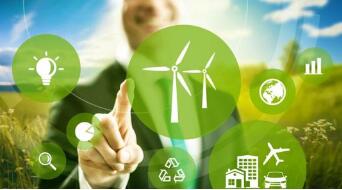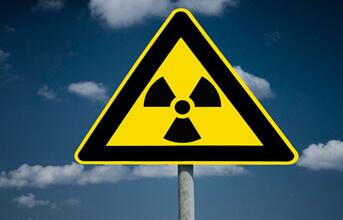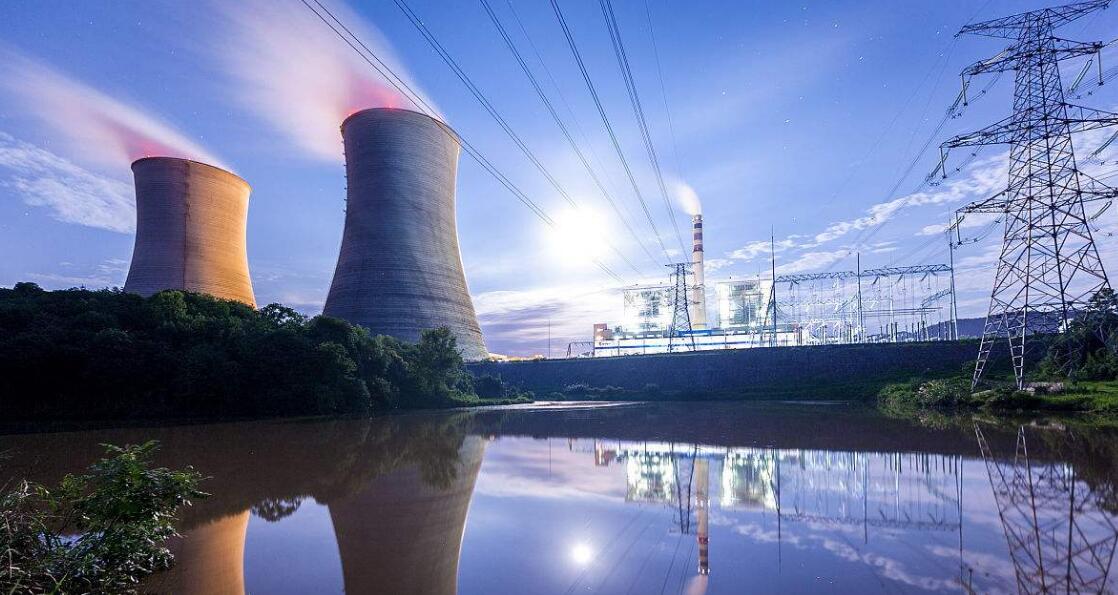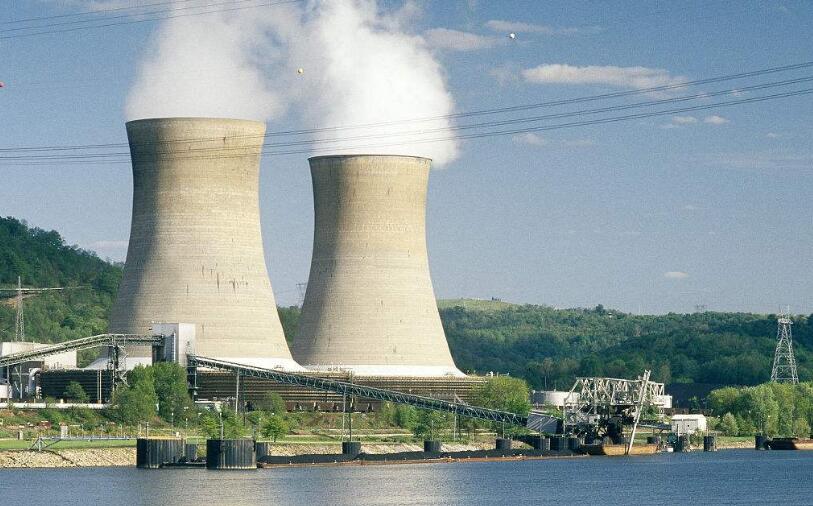Is nuclear energy a renewable energy source?
Renewable energy refers to a variety of inexhaustible sources of energy, and rigorously, it is an energy that humans will not exhaust in their lifetimes. Renewable energy does not include current limited energy sources such as fossil fuels and nuclear energy.
Most of the renewable energy is actually the storage of solar energy. Renewable means not providing energy for ten years, but centuries or even millennia.
With the advent of the energy crisis, people began to discover the importance of renewable energy.

Water energy - According to the latest review results, China's economically developable hydropower resources are 400 million kW, and annual power generation is 1.7 trillion kW·h, of which 50,000 kW and below are 1.25 billion kW. It is very extensive and covers more than 1,600 counties (cities) in 30 provinces (autonomous regions and municipalities).
Wind energy - About 20% of China's land area has relatively abundant wind energy resources, mainly distributed in the southeast coast and its islands, northwest, north China and northeast "three north" areas, especially Xinjiang and Inner Mongolia, with abundant wind energy resources. It is estimated that China's land-developable wind power installed capacity is about 250 million kW, and the offshore wind energy resources are larger. The power generation installed capacity can be about 750 million kW, and a total of 1 billion kW of power generation capacity can be developed.
Biomass Energy - Biomass energy mainly includes agricultural and forestry production and processing waste, industrial wastewater and municipal solid waste. China is a large agricultural country with a wide distribution of agricultural waste resources. The annual output of crop straw is more than 600 million tons. The straw used for energy purposes is about 350 million tons, which can be equivalent to 150 million tons of standard coal. It is estimated that the total amount of biomass energy available will be about 500 million tons of standard coal per year.
Solar energy - most of China is located at 45° north latitude. The annual sunshine time of 2/3 of the country's land area is more than 2,200 hours. The total annual solar radiation per square meter is 3340-8400 megajoules. The land surface receives it every year. Solar radiant energy is equivalent to 1.7 trillion tons of standard coal, and solar energy resources are very rich. Solar energy utilization technologies mainly include power generation and heat utilization.
Other renewable energy sources - in addition to the above-mentioned water, wind, solar, and biomass energy, as well as renewable energy resources such as geothermal energy and ocean energy, also have certain resource potential and broad utilization prospects.

As more and more countries adopt policies and measures to encourage renewable energy, the scale of production and use of renewable energy is expanding. In 2007, the global renewable energy power generation capacity reached 240,000 megawatts, an increase from 2004. 50%.
In 2007, at least 60 countries have formulated policies to promote sustainable energy development. The EU has set a goal of achieving sustainable energy by 20% of all energy by 2020, and China has established renewable energy by 2020. The target of total energy is 15%. In 2007, global grid-connected solar power generation capacity increased by 52%, and wind power generation capacity increased by 28%. About 50 million households around the world use rooftop solar water heaters to get hot water, 2.5 million homes use solar lighting, and 25 million households use biogas for cooking and lighting.
The increase in the proportion of renewable energy conveys the message that the “green economy†is emerging. The new greenhouse gas emission reduction mechanism after the expiration of the Kyoto Protocol in 2012 will further promote the all-round development of the green economy.
According to China's medium and long-term energy plan, before 2020, China can basically rely on conventional energy to meet the energy needs of national economic development and people's living standards. By 2020, the strategic position of renewable energy will become increasingly prominent, and renewable energy will be needed by then. Provide energy for hundreds of millions of tons or even more than one billion tons of standard coal. Therefore, the strategic goal of China's development of renewable energy will be to maximize energy supply capacity, improve energy structure, diversify energy sources, and ensure the safety of energy supply.

Nuclear energy is not a renewable energy source. Especially now that we have used nuclear fission energy, the elements of nuclear fission are non-renewable. The thermonuclear fusion energy can be said to be almost "renewable" energy.
Why do you say that the nuclear fusion element hydrogen 3 is derived from the sun, and the current hydrogen 3 on the earth is basically a dynamic equilibrium. The half-life of this isotope is about 12.3 years. Due to decay, the amount brought by the solar wind is in equilibrium. . If it can be used, it has almost no significant effect on hydrogen 3 in nature, so it can be called “renewable†energy, and its regeneration is derived from the transmission of solar wind.
According to the law of conservation of energy, if you hit a larger nucleus to release a huge amount of energy, then the resulting nucleus needs to absorb huge energy by breaking it into small pieces. At present, humans have no way to provide such a large amount of energy to make them small. Blocks, of course, are not non-renewable resources.
However, you can rest assured that although nuclear energy is a non-renewable resource, it has a large reserve of uranium and other materials that can be used as nuclear energy, and it can be used for a long time.

nuclear energy
Nuclear energy is the energy released by changes in the structure of the nucleus. At present, there are three main types of nuclear energy used by human beings: the nuclear energy released by the nucleus of a heavy element and the nucleus of a light element, or the process by which a nucleus emits a certain particle and becomes another nucleus. Fission energy, nuclear fusion energy and nuclear decay.
History of nuclear energy development
At the end of the 19th century, British physicist Thomson discovered electrons. In 1895, the German physicist Roentgen discovered X-rays. In 1896, the French physicist Becquerel discovered radioactivity. In 1898, Madame Curie discovered a new radioactive element.
In 1902, after four years of hard work, Madame Curie discovered the radioactive element radium. In 1905 Einstein proposed a formula for mass-energy conversion.
In 1914, the British physicist Rutherford determined through experiments that the hydrogen nucleus is a positive charge unit called a proton.
In 1935, British physicist Chadwick discovered the neutron.
In 1938, German scientist Otto Hahn bombarded the uranium nucleus with neutrons and discovered nuclear fission. On December 2, 1942, the University of Chicago successfully launched the world's first nuclear reactor.
On August 6 and 9 of 1945, the United States placed two atomic bombs in Hiroshima and Nagasaki in Japan.
In 1957, the Soviet Union built the world's first nuclear power plant, the Obrynsk nuclear power plant.
Before 1945, humans only involved physical and chemical changes in the field of energy use. During the Second World War, the atomic bomb was born. Humans began to apply nuclear energy to military, energy, industrial, aerospace and other fields. The United States, Russia, Britain, France, China, Japan, Israel and other countries have successively launched research on the application of nuclear energy.
Nuclear power generation
The development and utilization of nuclear energy is one of the most outstanding achievements in the history of science and technology in the 20th century. It converts the energy released from the nucleus by its mass, in accordance with Albert Einstein's equation E=mc2, which shows that mass and energy are equivalent, and the proportionality constant is the square of the speed of light. In the utilization of nuclear energy, the development of nuclear power plants is quite rapid. It has been recognized as an economic, safe, reliable and clean energy source. Nuclear power technology has been greatly developed in most developed countries and is also in many developing countries. Widely recognized. According to energy demand and energy production structure, the Chinese government has formulated a policy of actively developing nuclear power, and built two nuclear power bases in Qinshan and Daya Bay. The safety strategy of China's nuclear power construction has been successful.

advantage:
1. Nuclear power generation does not emit huge amounts of pollutants into the atmosphere like fossil fuel power generation, so nuclear energy development will not cause air pollution.
2. Nuclear power generation does not produce carbon dioxide that aggravates the global warming effect.
3. Uranium fuel used in nuclear power generation has no other use than power generation.
4. The energy density of nuclear fuel is several million times higher than that of fossil fuels. Therefore, the fuel used in nuclear power plants is small in size and convenient for transportation and storage. A 1000 megawatt nuclear power plant requires only 30 metric tons of uranium fuel per year. The plane can be completed by a voyage.
5. Among the costs of nuclear power generation, the proportion of fuel costs is relatively low, and the cost of nuclear power generation is less susceptible to the international economic situation, so the cost of power generation is more stable than other power generation methods.
Disadvantages:
1. Nuclear power plants produce high-level and low-level radioactive waste, or used nuclear fuel. Although they are small in size, they must be treated with caution because of their radiation, and they face considerable political troubles.
2. The nuclear power plant has low thermal efficiency, so it emits more waste heat into the environment than the general fossil fuel power plant, so the thermal pollution of the nuclear power plant is more serious.
3. The investment cost of nuclear power plants is too large, and the financial risks of power companies are high.
4. Nuclear power plants are less suitable for peak-loading and off-peak operation.
5. The construction of nuclear power plants is more likely to trigger political differences.
6. There are a large amount of radioactive materials in the reactor of a nuclear power plant. If it is released into the external environment during an accident, it will cause harm to the ecology and the public.

China's nuclear power development and development trend
China's energy structure is still dominated by coal, and the proportion of clean and high-quality energy is low. The total installed capacity of nuclear power plants currently under construction and under construction in China is 8.7 million kilowatts. It is estimated that by 2010 China's nuclear power installed capacity will be about 20 million kilowatts, and by 2020 it will be about 40 million kilowatts. By 2050, according to the estimation of different departments, China's nuclear power installed capacity can be divided into three types: high, medium and low: high program is 360 million kilowatts (about 30% of China's total installed power capacity), medium plan is 240 million kilowatts (about It accounts for 20% of China's total installed power capacity, and the low plan is 120 million kilowatts (about 10% of China's total installed power capacity).
Judging from the general trend of nuclear power development, the technical route and strategic route for China's nuclear power development have already been clearly defined and are being implemented. The current development of pressurized water reactors, the development of fast neutron reactors in the medium term, and the development of fusion reactors in the long term. Specifically, the recent development of thermal neutron reactor nuclear power plants, in order to make full use of uranium resources, the technical route of uranium-plutonium circulation, the development of fast-neutron breeder reactor nuclear power plant in the medium term, and the development of fusion reactor nuclear power plants in the long-term, thus basically "forever" solution The contradiction of energy demand. Promote global nuclear energy use
In today's world, nuclear energy has become an increasingly important source of clean energy. The "nuclear power plant crisis" triggered by the earthquake in Japan continues to affect the nerves of the world. At this moment, in addition to paying attention to the continuous spread of nuclear radiation materials, how to treat the use of nuclear energy has become a topic of extensive discussion, and concerns about the safety of nuclear power plants are also pervasive.
The Fukushima nuclear crisis shows that when humans have come to re-examine nuclear energy applications, cleaning alone is not enough and must be safe. Nuclear safety management is a dynamic and dynamic process. It has both fairly stable regulations and regulations, and it is constantly improving with the advancement of technology. Under the premise of safety first, how to further improve the safety level and improve the social and economic competitiveness of nuclear power requires us to grasp the overall situation, take care of the overall situation, and integrate. Raising human control over nuclear energy, reducing risks, and safe application are the alarms for the Fukushima nuclear crisis.
Insulated Terminals,Terminals,High-quality insulated terminals
Taixing Longyi Terminals Co.,Ltd. , https://www.longyicopperlugs.com